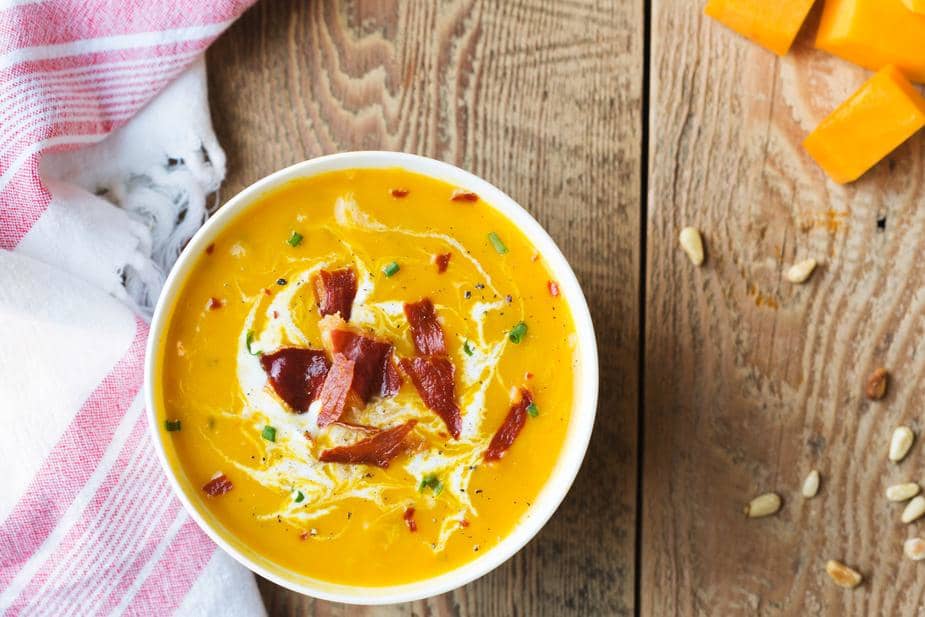Known for its smoothness and creamy texture, the butternut has a fine and melting orange-yellow flesh.
This squash, recognisable by its pear shape, is a member of the cucurbit family, which includes 800 species divided into 120 genera.
Les principales espèces botaniques sont les suivantes:
- Cucurbita pepo, which includes courgette, pumpkin, spaghetti squash and pumpkin,
- Cucurbita maxima, of which the main representatives are pumpkins and marrow,
- Cucurbita moschata which includes butternut squash and butternut.
The butternut and its cousins the squash are probably native to America and more precisely to Peru. Traces of their cultivation have been discovered there, dating back to 1200 BC.
Initially appreciated for their seeds, they were soon recognised in Europe for the quality of their flesh.
In cooking, butternut is prized for its creaminess, satiety and high fibre content. With only 53 kcal / 100 grams, it contains 1g of protein and 8.10g of carbohydrates. Fat is present in very small quantities. Butternut seeds are also rich in zinc.
The flesh of the butternut is rich in provitamin A (beta-carotene). A daily consumption of 250g of butternut covers 100% of the daily requirement of this vitamin. It is also rich in vitamin C. Butternut is also a very good cholesterol regulator and facilitates intestinal transit.
Butternut is an autumn vegetable that can be eaten all year round thanks to its long shelf life. It is grown from March to September and eaten from September to June. Stored in a cool, dry place, it keeps for 6 to 10 months. Another storage tip is to cut them into small cubes and freeze them. They can then be stored for up to 12 months.
In the kitchen, butternut can be made into a soup, pie, gratin, purée, steamed, etc. There is no need to peel it, just clean it well.
Les astuces de Philippe Debra
Aux Notes de mon Jardin, Philippe Debra adore rôtir des dés de butternut dans un mystérieux mélange d’épices… dont lui seul a le secret. Un régal pour les papilles !
Une autre astuce du chef, associer le butternut aux saveurs thaï du coriandre et lait de coco. A découvrir dans notre soupe Butternut façon Thaï. Bonne dégustation !



